- Administrator
- Albums and Singles
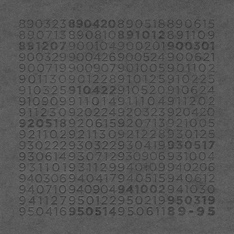 Between 1989 and 1995, Rudolf Eb.er (Runzelstirn & Gurgelstock) and Joke Lanz (Sudden Infant) had a monthly radio show for Switzerland’s 104.5 FM station. Titled Psychic Rally Transmission, each show was an improvised live performance, mixing found tapes, random household instruments and other items, that helped to define the then-nascent Schimpfluch-Gruppe. Aggressive industrial, punky outbursts, and a healthy dose of absurdity pepper the ten complete shows presented in this box.
Between 1989 and 1995, Rudolf Eb.er (Runzelstirn & Gurgelstock) and Joke Lanz (Sudden Infant) had a monthly radio show for Switzerland’s 104.5 FM station. Titled Psychic Rally Transmission, each show was an improvised live performance, mixing found tapes, random household instruments and other items, that helped to define the then-nascent Schimpfluch-Gruppe. Aggressive industrial, punky outbursts, and a healthy dose of absurdity pepper the ten complete shows presented in this box.
The duo's penchant for Dada inspired absurdity is what makes up the core of Psychic Rally Transmission.Right from the animal like noises and a questionable karaoke performance of Air Supply’s "The One That You Love" that open the first show, it was clear that the mood was going to be more bizarre than intense.Tapes of random discussions, TV show advertisements and phone calls spring up throughout, keeping the material extremely chaotic.Some of the shows do show a sort of theme or commonality within them, but even in those, the duo barely sit still.
With each single show clocking in at 60-75 minutes and taking up a whole disc each, there is quite a bit of material to listen through, material that at times is intentionally grating and challenging.Tape loops that go on too long, intentionally painful feedback and so forth make for difficult listening.However, it is one of those situations where the warts add greatly to the whole package.
Being a radio show, the duo occasionally play records from other artists, albeit with a significant amount of effects and processing.Early Whitehouse and Public Image Ltd.'s "Cowboy Song" end up represented, and an abridged playing of Genocide Organ's "Mind Control," paired with chintzy dance beats, works brilliantly.Random bits of German drinking songs, kids music, and some folk stuff all show up at some point, the last three shows especially showcasing a lot of the beer hall material.
Less discernible music also springs up throughout, and given its ragged, lo-fi sound, I assume a lot of it may be Lanz or Eb.er’s own work in studio or via pre-recorded cassettes.Punk rock outbursts from the March 1 1990 show instantly made me think of when Sudden Infant have gone in that direction, and the improvised percussion and guttural sounds from May 18 1992’s show are all R&G's organic body horror collage.
The in-studio performances range from standard harsh noise elements, such as the feedback and drones of April 22 1991's show, which is perhaps the most focused single disc here.Tapes and random effects spring up, but on the whole it stays a consistent harsh noise work.On May 17, 1993, cheap electronic noises and beat boxes eventually give way to distorted, harsh industrial rhythms that is no more pleasant in a conventional sense, but extremely enjoyable.
Ten hours of cut up tapes, weird found music, and studio improvised noise recordings ensure this set may not be the most accessible package.However, the material contained within are perfect examples of the material the members of the loosely defined Schimpfluch-Gruppe have been releasing over the past 25 plus years.Anyone who is familiar with Lanz and Eb.er's work will find much to love on here, in a format that benefits from its mostly unedited and spontaneous nature.
samples:
 
Read More
- Administrator
- Albums and Singles
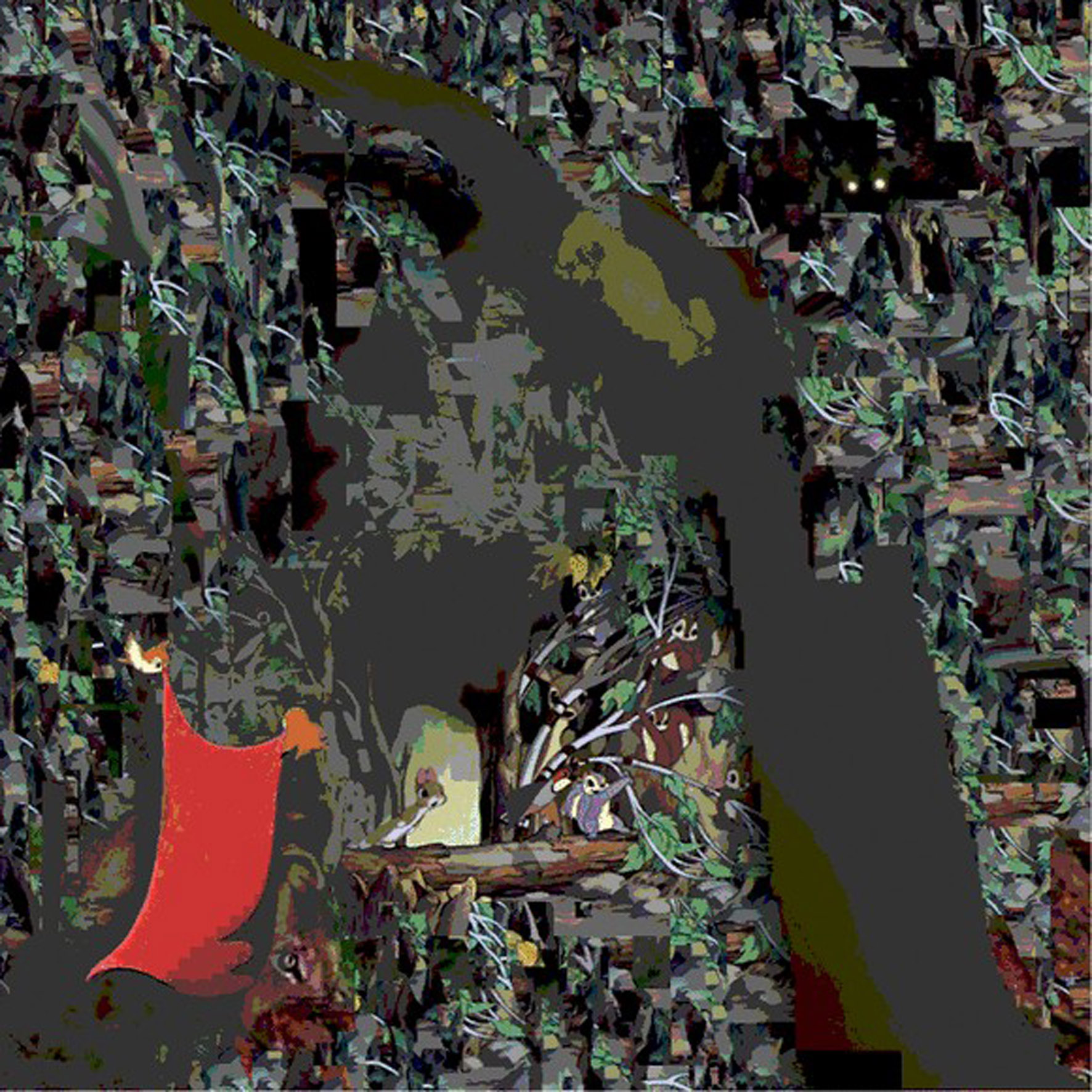 This is the debut effort from the duo of Ensemble Economique's tirelessly prolific Brian Pyle and Je Suis Le Petit Chevalier's Félicia Atkinson and it is a great one.  Consisting of two very different long-form pieces, Naked Island offers up a beguiling and hallucinatory mélange of breathy spoken word, dreamy synth drones, clattering percussion workouts, blown-out shoegaze bliss, and spacey abstraction.
This is the debut effort from the duo of Ensemble Economique's tirelessly prolific Brian Pyle and Je Suis Le Petit Chevalier's Félicia Atkinson and it is a great one.  Consisting of two very different long-form pieces, Naked Island offers up a beguiling and hallucinatory mélange of breathy spoken word, dreamy synth drones, clattering percussion workouts, blown-out shoegaze bliss, and spacey abstraction.
The first side of this record is consumed by the ambitiously titled "Deep, Transcendent Waves of Golden Light," which opens in a dreamlike reverie, as Atkinson whispers in French over a bed of retro-futurist synth drones.  Gradually, however, a muted techno thump fades in and the piece begins to cohere into something more structured and propulsive.  In a general sense, "Waves" has a lot in common with Pyle's recent Ensemble Economique work, as the sizzling, spacey swells are soon bolstered by lush, Romantic, and goth-y synth chords, hallucinatory studio tweaking, and some buried, yet tormented, guitar-like moans.  As much as I enjoy all of that stuff normally, it is presented in a much more effective way on this album than it has been on some of Pyle's solo works.  I have no idea if Atkinson is responsible for the wise addition of the lively, thumping pulse, but her sensuous vocals are most definitely a welcome addition to Pyle's bleary, melancholy strain of psychedelia.
The album's second side is similarly excellent, as "Play it as it Lays" is built upon a wonderfully clattering and dynamic drum beat that is a strong enough hook to carry the entire piece by itself.  Perhaps realizing this, Brian and Félicia opted for far more amorphous/vaporous musical accompaniment this time around, dispensing with words or any kind of prominent chord progression.  Instead, the duo embellish their rolling percussion with a shifting organ drone, hazy swells of wordless vocals, and a shimmering nimbus of peripheral mindfuckery.  Gradually, however, the drums are overtaken by the accumulating washes of burbling and shimmering synths and floating vocals, leading to a lovely and vibrant coda of shapeless, oceanic bliss and buried, roiling noise.
The sole criticism that I can muster is that Naked Island sounds a lot more like a great Ensemble Economique album than something completely new and different, though I am perfectly fine with that state of affairs.  Aside from her vocals on "Deep, Transcendent Waves," it is difficult to tell exactly where Atkinson's influence manifests itself, as her solo work is primarily a somewhat chameleonic strain of layered, phantasmagoric experimentalism.  It is probably safe to say that her presence is responsible for the heightened druggy weirdness swirling around the more structured bits, but whatever she did seems to have brought out the best in both her and Pyle.  For one, both pieces are beautifully constructed compositions that maintain a pleasant momentum and achieve a satisfying dynamic arc.  Secondly, this album is an unusually warm and human one, as far as fringe-y abstract experimentalism goes.  I am not sure if I would state that Naked Island is definitely a career zenith for either Pyle or Atkinson, but a strong case could certainly be made, as this is an absolutely essential release for fans of either.
(Note: I would be remiss if I did not also point out that this record has very cool lenticular cover art.)
- Deep, Transcendent Waves of Golden Light
- Play it as it Lays (excerpt 1)
- Play it as it Lays (excerpt 2)
 
 
Read More
- Administrator
- Albums and Singles
 This is an unusual duo with an unusual pedigree, as Zeigler is a Philadelphia engineer best known for working with artists like Kurt Vile and The War on Drugs, while Lattimore is a harpist who has worked with all kinds of interesting folks in the past, ranging from Jarvis Cocker to Wrekmeister Harmonies.  Together, they create something that would have been perfectly at home on 2013's fascinating I Am The Center compilation…almost.  While Lattimore's rippling harp weaves a gently hallucinatory and dreamlike spell that veers close to both New Age and chamber music at times, Zeigler's well-placed guitar and synth coloration gives these four pieces a welcome heft and unpredictability.  Admittedly, the balance between pastoral and avant garde is not always quite optimal, but this is nevertheless a strong and distinctive debut.
This is an unusual duo with an unusual pedigree, as Zeigler is a Philadelphia engineer best known for working with artists like Kurt Vile and The War on Drugs, while Lattimore is a harpist who has worked with all kinds of interesting folks in the past, ranging from Jarvis Cocker to Wrekmeister Harmonies.  Together, they create something that would have been perfectly at home on 2013's fascinating I Am The Center compilation…almost.  While Lattimore's rippling harp weaves a gently hallucinatory and dreamlike spell that veers close to both New Age and chamber music at times, Zeigler's well-placed guitar and synth coloration gives these four pieces a welcome heft and unpredictability.  Admittedly, the balance between pastoral and avant garde is not always quite optimal, but this is nevertheless a strong and distinctive debut.
Slant of Light opens with the lovely, harp-driven "Welsh Corgis in the Snow," which unfolds a gently melancholy melody of plucked arpeggios.  Zeigler, for his part, sticks to something of a background role for "Corgis," but handles it beautifully, embellishing Lattimore's rippling harp with woozy, shimmering swells of synth or heavily treated guitar.  On the following "White Balloon," however, it is Jeff who steers the piece with a neo-classical sounding arpeggio progression of his own, though Lattimore's plucked melody organically weaves in and out of it nicely.  At times it verges a bit too close to "pastoral" for my taste, but Zeigler narrowly keeps things from becoming too polite with a subtle backdrop of electronic noise and whooshing atmospherics.
The album's second half leads off with "Echo Sounder," the first piece that sounds like it actually began collaboratively, as its bleary, gently warped ambience unfolds in a languorously meandering fashion that strongly suggests improvisation.  I hesitate to use the word "purposeless" to describe it, as that would sound too negative, but it is the sort of piece that just pleasantly hangs in the air and quavers pleasantly rather than sets off towards a planned destination.  While it lacks much of the melody or momentum that carried the album's first half, its hazy, twinkling reverie is very likable in its own right.
The closing "Tomorrow is a Million" is similarly divergent from Slant’s more composed opening pieces, though it takes things in a much more unpredictable and experimental direction than I had anticipated. It begins innocently enough, though Lattimore's rapidly plucked arpeggios are a bit darker and more unstable-sounding than they were previously.  Zeigler, however, is quite intent on dragging the piece into far deeper, stranger waters, gradually escalating from ghostly whines, scrapes, and echoing noises to a scary, noisy industrial-sounding crescendo.  It is certainly not nearly as easy on the ears as the rest of the album, nor is it entirely successful, but it is nevertheless Slant of Light's most compelling and unique piece as well as its most convincing raison d’être.  Rather than sounding like either a Mary Lattimore piece or collaborative improvisation, "Tomorrow" sounds like a Mary Lattimore piece that has been torn and stretched into something bizarre and largely unrecognizable.  That is an unexpected and impressive achievement, though the sped-up early Tangerine Dream-style synth at the end sounds a bit deranged and misplaced.
It is difficult to say whether Slant of Light has any real flaws, as it feels like Mary and Jeff had fairly modest ambitions for this effort and delivered a uniformly likable batch of songs: for the most part, this sounds exactly like two kindred spirits getting together to make some enjoyable and interesting music.  I suppose there is a lack of a clear, unified vision and "Tomorrow" hints at a potentially more adventurous, unusual, and significant album that could have been, but such things take time.  I need to have more reasonable expectations for debut albums, I guess–for all its minor quirks and unevenness, Slant of Light is still dramatically better and more instantly gratifying than most instrumental efforts that cross my path.
 
Read More
- Administrator
- Albums and Singles
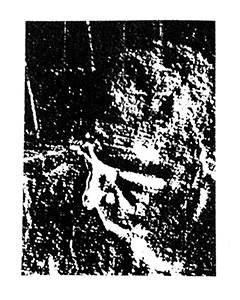 Respectfully revisiting the early sounds defined the second wave of industrial, the one associated with the likes of Skinny Puppy and KMFDM, this Texas duo’s penchant for vintage sounds and minimalist structures definitely show their influences. The songs merge together into a delightfully gray, meandering bit of rhythmic industrial music that is tastefully understated but never dull.
Respectfully revisiting the early sounds defined the second wave of industrial, the one associated with the likes of Skinny Puppy and KMFDM, this Texas duo’s penchant for vintage sounds and minimalist structures definitely show their influences. The songs merge together into a delightfully gray, meandering bit of rhythmic industrial music that is tastefully understated but never dull.
The first half of this tape is the one that has the rougher approach, mixing simple sequences and drum machine programs that plod along (in a good way), lingering long enough to blend together hypnotically, but never so long as to become boring or monotonous."Restricted Area," for example, has the duo sticking to a bass synth led structure, mixed with thick, heavy beats.It does not diverge much from this arrangement, but stays engaging throughout its three and a half minute duration.
The major touchstones of Corporate Park's influences are never too oblique:their penchant for cheap, tight springy reverbs instantly reminded me of Esplendor Geometrico but with significantly distortion, and on "Too Expensive to Live," a far more relaxed, calm demeanor compared to EG’s relentless, pummeling electronic assault.
"Pillow Talk" emphasizes on the same sort of production, but with its diverse array of sounds and oddly processed vocals, I felt more of a kinship with the earliest Skinny Puppy demos from Back and Forth, conjuring the same bleakness and lurking menace."Pundit Mantra" might be shrouded in distortion that makes it sound very much of the genre, yet not specifically reminiscent of any one artist, with the added multi-layered dialog samples expanding that vintage 1980s feel.
On the final two songs, the duo diversifies their approach a bit more."Mise En Abyme" is built upon more conventional drum sounds and programming, with the remainder largely made up of pulsing bass synth and random bleeps and synth chirps.Structurally repetitive, the addition of heavily processed and muffled vocals that are treated enough to sound human, but remain largely indecipherable make it memorable.The short closing "Firmament" features a simple, almost naked sounding drum machine with expansive, droning synths, resulting in a more ambient work.At just a hair over two minutes, it ends up expansive piece compared to the tighter, more rhythmic focused ones, and it works great as an ending.
I know this resurgence in early industrial/EBM smacks of a trend, and based on the number of reviews I have written in the past couple years mentioning this, it is obviously one that I am fully on board with.The influences that shine through heavily with the likes of Corporate Park (and High-Functioning Flesh and Pure Ground, amongst others) are ones that date back to my formative years of pursuing more unconventional music, and thus I will always have an affinity for them.Maybe I have just been lucky, but as of now I have not encountered any projects that have turned me off from this resurgence, and Corporate Park continues that trend of mixing quality and familiarity.
samples:
 
Read More
- Administrator
- Albums and Singles
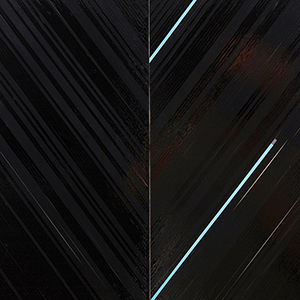 As Terence Hannum's primary project Locrian continues its transition from a small drone project to a more diverse and recognizable behemoth on a large label, recording in major studios, Via Negativa thematically functions as a "remembering his roots" record. Recorded alone in his basement studio, the DIY ethos of his early days is obviously present, but the music is as professional as it comes.
As Terence Hannum's primary project Locrian continues its transition from a small drone project to a more diverse and recognizable behemoth on a large label, recording in major studios, Via Negativa thematically functions as a "remembering his roots" record. Recorded alone in his basement studio, the DIY ethos of his early days is obviously present, but the music is as professional as it comes.
This "look back" concept has been a part of Hannum's visual work as of late as well, some of which adorns the gatefold of this LP.The patterns and images created from cutting up magnetic cassette tape is surely no accident:Hannum and I are the same age, and I can only assume it is a conscious effort to revisit the de facto audio format of his youth.
In the same way, the three pieces that make up this album (with a fourth digital bonus one that would not fit on the LP) follow the same theme.Retreating to his basement with synth collection in tow, the sound of this record is unsurprisingly reminiscent of parts of Locrian proper.It works like the distillation of the keyboard heavy progressive rock tendencies of that band, one that has never shied away from name checking early Genesis and King Crimson in their influences.Also, I cannot help but visualize Hannum standing behind his racks of gear, complete with a homemade gold lamé cape to fully channel his inner Rick Wakeman.
The lead piece, "Become More, Become Less" (undoubtedly another variation on the album’s theme) introduces the album with an appropriate darkness.Spooky electronic noises and deep bass mix with Hannum's monastic chanting, his voice acting as an additional instrument than vocals in the traditional sense.The intentional dark and creepy vibe is fitting, and the piece ends with a tasteful elongated synth drone.
The mood and tone varies by the time "If Only You Knew What Darkness I am Plunged Into" comes around.Retaining the deep bass with shimmering keyboard waves, I was reminded of the electronic score to Apocalypse Now and hints of John Carpenter’s classic 1980s soundtracks.Minimalism and repetition feature heavy throughout its near 16 minutes, but the subtle variations and use of vocals result in a minimalism that is clearly artistic direction and not laziness by any means.
"Unapproachable Light," on the other side of the record, has a most befitting title.Working with heavy church organ passages and rich, complex surges of sound, a holy music vibe is prominent throughout the piece, akin to Arvo Pärt loading up on electronics rather than writing classical-focused compositions.The digital-only "The Ideal Forms" comes off as an extension of this.More immediate in its intensity, the mix of subtlety and monolithic walls of sound is powerful, and builds to a dramatic conclusion.
Hannum's influences shine through clearly on Via Negativa, a throwback album that manages to not at all bask in self-importance or pretense.Locrian have not hit that Spinal Tap-esque misdirection that often precedes a release of this nature, nor do I think things will take that turn for the trio.Instead, it is strong work that does what a good solo album should, namely showcase the individual's contributions to a band, and take that in directions that may not fit in the main project.
samples:
 
Read More
- Duncan Edwards
- Albums and Singles
 Ziguri's debut album, produced by Schneider TM, blends smooth and powerful motorik monotony, babbling vocals, and also dares to set Thomas Pynchon lyrics to music.
Ziguri's debut album, produced by Schneider TM, blends smooth and powerful motorik monotony, babbling vocals, and also dares to set Thomas Pynchon lyrics to music.
In 1987, Günter Schickert, Udo Erdenreich and Dieter Kölsch, from the Berlin theater 100Fleck, formed Ziguri Ego Zoo, a musical theater project which soon became the group Ziguri. They played together until 1997 but the trio reformed in 2011 and their close understanding is the key factor in the success of this recording. Another is Günter Schickert, a well known innovator of hypnotic and psychedelic music. He and Manuel Göttsching are among the figures pioneering the use of echo guitar and his solo albums Samtvogel (1974) and Überfällig (1979) are revered cult classics.
The opening piece, "General Klickman," begins with an aggressive, garagey riff to build a raw tension, evolves into a slower and more medieval-sounding sombreness, and then repeats. The five tracks mainly consist of passages of driving drumbeats and bass lines, over which floats Schickert's trancey guitar. Here and there, short bursts of speed-gibberish chant match the urban-tribal atmosphere of the music.
Stuck splendidly in the middle of this album is "Yoyodyne," a daring manifestation of Pynchon's spoof of brainwashed industrial devotion in the employee chant of the Yoyodyne corporation. Ziguri gets the balance between inane, bawdy, sinister, and paranoid, just right. Pynchon's experiences working as a technical writer at Boeing, in Seattle, inspired the fictional defense contractor Yoyodyne corporation in his books V. (1963) and The Crying of Lot 49 (1966). Well-named, too, since the "dyne" is the standard unit of force in the centimeter-gram-second system of units, derived from the Greek word dynamis, and hence real companies, such as Teledyne, Teradyne, and Rocketdyne (an aerospace company) have existed.
One theme of Pynchon's work is the concept of entropy, but almost thirty years since their formation Ziguri seem to fly in the face of that by still prospering and honing their sound, rather than decaying. I was a bit wary of a group named after the peyote cactus which contains mescaline, since drug use is duller to me than tupperware parties. Thankfully, Kölsch-Schickert-Erdenreich revels in a good kind of monotony. Or, to tweak the words of G.K.Chesterton: "monotony, either in its sensation or its infliction, is simply the quality of a person. There are no dreary sounds; there are only dreary sound hearers."
 
 
Read More
- Administrator
- Albums and Singles
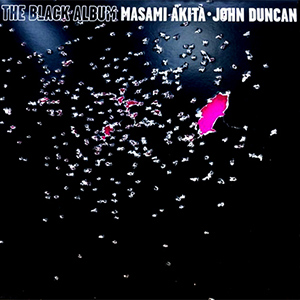 The title of this (surprisingly first) recorded collaboration between Akita and Duncan certainly conjures images of similarly titled works that are regarded for their brilliance (Prince), or drastic shifts for the worst (Metallica). Other than the fact that it is the first work between these two legendary artists, it does not carry the same monolithic weight sonically. It is, however, still a powerful collaboration that reflects both artists’ strengths quite well.
The title of this (surprisingly first) recorded collaboration between Akita and Duncan certainly conjures images of similarly titled works that are regarded for their brilliance (Prince), or drastic shifts for the worst (Metallica). Other than the fact that it is the first work between these two legendary artists, it does not carry the same monolithic weight sonically. It is, however, still a powerful collaboration that reflects both artists’ strengths quite well.
Details and specifics are scant on this LP, with three untitled pieces (one comprising the entire A side, the other two on the flip) and the only bit of credits specifying the two worked with Duncan’s recordings of the Gran Sasso Nuclear Laboratory.That alone of course arouses curiosity.The A side is a swarm of stammering, stuttering glitches and surging bits of noise.It takes on a sort of insane, malfunctioning computer feel with shrill squeaks and erratic bursts.
It obviously is dissonant and seemingly formless, but the amount of layering and variety and moderate volume levels make it completely listenable.As it goes on it becomes a wet, sloppy series of bursts.The ending focuses more on crunchy noises and tactile textures.
The first piece on the B-side ends up being more traditionally harsh noise in its composition.Layers of grinding, scraping, and sputtering noises stay relatively constant as it goes on.The sound is not as erratic or messy as the other side, instead has a nice, tight feel and flow to it.Between this and the crackly passages of static, it stays engaging rather than becoming a test of endurance.
The other piece harkens back to the skittering glitches of the A side, but with a deep echoing throb and high pitched, sharp and spiny layer.With these elements encasing around a heavy machinery-like drone (perhaps the untreated source material), it is almost a boisterous piece of ambient music, giving needed space and smoothness later on.
The monochromatic title of Akita & Duncan's work might hide the actual diversity of sound here, but the unique packaging and artwork does anything but.The stark black cover features a nice die cut job via a shotgun blast, revealing the bold, glossy pink inner sleeve.Within that sleeve the vinyl sits nicely in its intensely green glory.It might not reinvent the wheel, but it is a high water mark in both artists’ discographies, and is a befitting, complex work from two distinguished composers.
samples:
 
Read More
- Administrator
- Albums and Singles
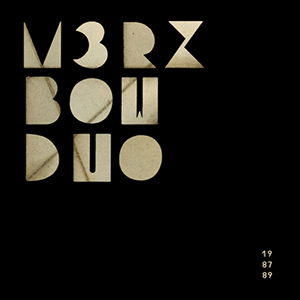 At first I was not sure how this box set slipped by me when it was released last year, but then I remember this is Merzbow we are talking about. He puts out more boxes in a year than most artists do single albums. This is one, however, that should not have gone overlooked. As indicated by the title, this is Masami Akita not alone, but with Kiyoshi Mizutani, and consists of ten discs of raw improvised sessions recorded between 1987 and 1989. Deeply entrenched in the Akita’s junk noise phase, it a sprawling, yet captivating document of the best years of Merzbow.
At first I was not sure how this box set slipped by me when it was released last year, but then I remember this is Merzbow we are talking about. He puts out more boxes in a year than most artists do single albums. This is one, however, that should not have gone overlooked. As indicated by the title, this is Masami Akita not alone, but with Kiyoshi Mizutani, and consists of ten discs of raw improvised sessions recorded between 1987 and 1989. Deeply entrenched in the Akita’s junk noise phase, it a sprawling, yet captivating document of the best years of Merzbow.
These sessions acted as raw materials for some Merzbow releases of the era, such as S.C.U.M., but here are recordings without the tape edits or further processing.This is just two men and a slew of instruments (traditional and otherwise) improvising in the studio for hours.Because of that, it does inch towards overkill since it documents the source material that was intended for further treatments.It is a voluminous collection (well over ten hours), but taken in bite sized chunks remains extremely enjoyable.
At times, the recordings come together more like extremely unconventional free jazz:"Duo 1987" is a blend of harshly bowed strings that could almost be manic duck calls with junky percussion.The combination almost resembles a horn/drum duo as far as sound goes, but is far more dissonant and pleasantly ugly."1 May 1988 A" has the same feel, but this time via rapid guitar noodling and rhythmic variations.Finally, "20 September 1987" is another bird of the jazz feather.What sounds like a bass guitar and random metal percussion paired up as if Akita and Mizutani tried to recreate Ornette Coleman's "Free Jazz" with whatever they could find at a junkyard.After a bit of organization they give up and just bang away jovially, with a loose and almost fun vibe to be had.
Other skewed attempts at making music show up throughout the set as well.The second part of "16 April 1989" leans not into jazz, but rock.What begins with someone screwing around on a guitar and a percussion section that sounds like flicking an empty soda can builds into a full on improvised guitar and drum performance, leading into a mass of sludgy stoner metal.The bit of straight up "music" works brilliantly amongst the otherwise pure dissonance and noise that has characterized Merzbow.
As expected, much of the recordings in this set are less structured and more chaotic masses of sound.Due to the duo working with a wide variety of instruments and effects, however, it never devolves into the mass of distortion pedal generated dull roar that blended much of Merzbow's output in the 1990s into a dull blur.High pitched feedback and electronic bursts on "19 June 1988 Part 1" are quite harsh, but the noisy metal percussion gives it additional depth.The second half of the piece accentuates the more piercing noises into a painfully shrill work without any clearly discernible source as far as instrumentation goes.
Metal scraping and distorted effects make up much of "25 June 1988 A", but the layering and density is not as intense, and with the addition of guitar it is more diverse than contemporary work from Akita."9 October 1989 Part 3" features the same array of cheap, probably broken effects pedals, with an almost sitar-like passage and a wonderfully sloppy start/stop structure that helps it to stand out.
The limited Art Edition of the Duo box features an 11th disc that is a bit odd compared to the rest, dating back to November 1979.While it is pretty far removed from the rest of the set's timeline, it still is a collaborative recording between the two.With Akita on drums and Mizutani manning the keyboards, it is a 41 minute improv that may be a bit self-indulgent, but its transitions from jazz to disco and into psychedelic rock are fascinating, even more so considering what Akita has been involved in for the 35 years since then.
Masami Akita's work as Merzbow from the project’s inception until the late 1980s has always grabbed my attention the most diverse and engaging.For that reason, I was extremely eager to hear this set, and was not disappointed.The variety of sounds and instrumentation is so much more pleasing and captivating than his later penchant to just crank a bunch of pedals up as loud as possible and repeating for hours.Essentially being unedited, it might lack the focused impact of Ecobondage or Batztoutai With Material Gadgets, but the untreated recordings are fascinating in their own right.Unquestionably one of the top tier Merzbow releases of all time.
samples:
 
Read More
- Administrator
- Albums and Singles
 What began as a lighter side project to Richard Chartier’s more academic work under his own name has evolved into its own distinct entity. Featuring some high profile vocal collaborations, including William Basinski, Cosey Fanni Tutti, and Kid Congo Powers, Description of Problem has Chartier expanding his kitchy project even further, into a dark, sexy album that adds another glittering jewel into his discography.
What began as a lighter side project to Richard Chartier’s more academic work under his own name has evolved into its own distinct entity. Featuring some high profile vocal collaborations, including William Basinski, Cosey Fanni Tutti, and Kid Congo Powers, Description of Problem has Chartier expanding his kitchy project even further, into a dark, sexy album that adds another glittering jewel into his discography.
At times, PCP stays somewhat close to Chartier's own work.Opener "Description of Problem/More Everything", with Aurora Liminalis collaborator William Basinski appearing via voicemail, is not too far removed from what appeared on that album:glistening, shiny melodies and electronic interference in an otherworldly haze.The lower fidelity moments and sampled voices are what gives it a distinct character compared to his other works."Perfunctory Attachments," the only one here that is Chartier alone, follows a similar pattern and style.The voice samples and haunting melody ensures it remains distinct from his other material, but his expert use of understated electronics is clearly present.
One of the most significant developments from the previous PCP albums comes on "Our Story," featuring vocals by AGF.The piece retains the Valium haze of the other album, but here Chartier employs an almost percussive bass throb that evolves into a crunchy, distorted pulse.The appearance of scattered melodic shards in the beginning and end keeps it clearly a PCP release, but his flirtations with rhythm are refreshing.
The album's centerpiece is a dark and captivating collaboration with Cosey Fanni Tutti titled "Boundlessly (for M. Heyer)".Chartier keeps the noises low and rumbly throughout, with creepy bits of melody and crumbling sound textures that enhance the impact of her voice.Cosey’s spoken vocals are hushed and intimate, and while the content of the lyrics may be disturbing, she brings an undeniable sensual mood that is beautifully matched with the lush electronic backing.
Gun Club/Cramps member Kid Congo Powers appears on a reworking of PCP’s "iamaphotograph (darkroomversion)", which appeared previously on Please Pick Up.On here it is pulled apart and disjointed even more, with Powers' male voice standing out forcefully in the contexts of the otherwise feminine voices that dominate the album.The result is an ugly and intimidating bit of animus amongst the anima that comprises Description of Problem.Even though it is more fragmented in comparison, it has the same dark filthy ambience that characterized the previous versions, and takes downright sonically evil turn at the end.
The aesthetic Richard Chartier has developed as Pinkcourtesyphone may bear little resemblance to the serious, scholarly work that he issues under his own name, but it features the same level of compositional skill and complexity that sounds like no other.The underlying theme of vintage camp and ennui results in an juxtaposition with the dark sexuality and hints of sleaze that permeate the album, resulting in a genius reality versus fantasy pairing befitting the 1950s housewife sensibility PCP has featured heavily in his albums thus far.
samples:
- Description of Problem (with William Basinski)/More Everything
- Our Story (with AGF)
- Boundlessly (for M. Heyer) (with Cosey Fanni Tutti)
 
Read More
- Administrator
- Albums and Singles
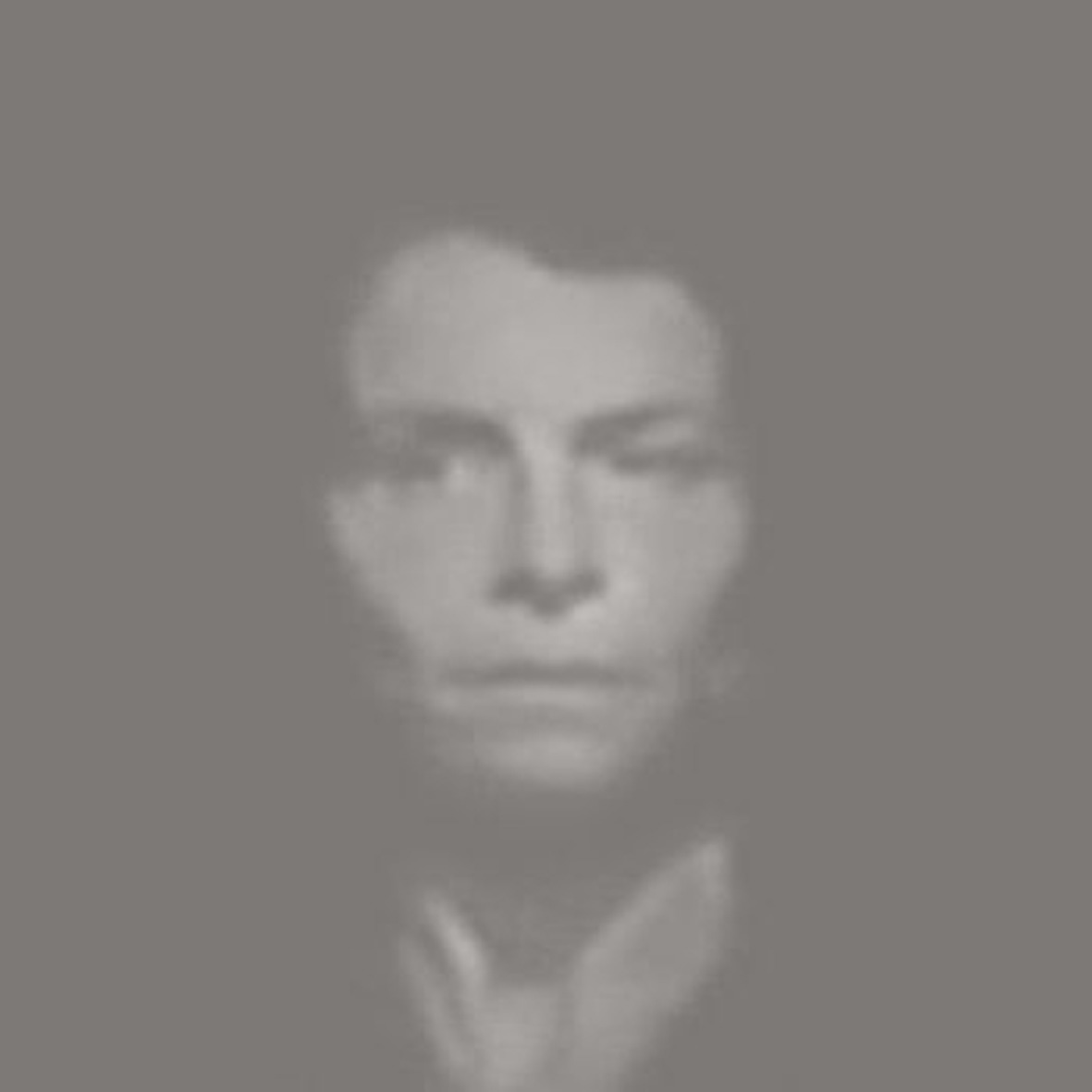
Although released concurrently with Tombs by Denovali, Loss is actually London engineer/musician Tim Garratt's second effort as Moon Zero.  While it shares Tombs’ unique approach of being composed and recorded entirely in an empty church, Loss is the fruit of Garratt's attempt to transform his aesthetic into something that he could perform live, resulting in a much more muscular, rhythmic approach without sacrificing much of the ghostly ambience that made his earlier compositions so compelling.  At its best, Loss resembles something like a rawer and more spontaneous Tim Hecker with a few very cool tricks up his sleeve.
The opening "Youth" captures Garratt at his most Hecker-esque, as a muted, melancholy organ melody floats like a fog while an escalating rumble builds beneath it and ghostly swells start to reverberate from the church's walls (the church being London's St. George in the East).  Ultimately, the piece builds to an impressively shuddering roar before quickly dissipating at the perfect moment, achieving an impressive convergence of mood, texture, and dynamics.  The following piece, "Nosema Cerenae," is an increasingly sinister-sounding bit of organ drone that fleetingly recalls Charlemagne Palestine or Catherine Christer Hennix, though Tim beautifully embellishes that intentional/unintentional homage with a roiling bass rumble, some fierce crackle, buried snatches of angelic vocals, and–most brilliantly–a brief surge of deep, absolutely tortured-sounding noise snarl.  As a whole, "Nosema" is not quite as strong as "Youth," but the demonic, overloaded noise snarl might stand as the best single moment on the album, as it feels like something deeply unholy is trying to tear its way out of my speakers.
Garratt nicely escalates the momentum for the second half with "Lara Witchcraft," where he quickly transforms pulsing synth and organ rhythm into something that resembles a lumbering, massive machine-noise waltz that is always precariously on the verge of tearing itself apart. After that impressive show of force, Loss winds down its conclusion with its longest piece, "The Industrial Sadness," which clocks in at around 8-minutes of deep, throbbing synth hum beneath a series of forlorn moans.  To my ears, it is by far the EP's weakest piece, as there is not any melody or chord progression to speak of–just a whole lot of vaguely eerie sci-fi atmosphere and some impressively heavy machine crunch near the end.  Unfortunately, all that power goes to waste, as it is not used to bolster an already compelling motif nor does it become particularly hypnotic or transform into something else.  It just escalates in force, then abruptly ends.
"The Industrial Sadness" aside, however, Loss is a damn near perfect effort (albeit quite a brief one), as each of the first three pieces is powerful, distinctive, unpredictable, and deftly executed.Tim Garratt clearly knows how to get the most out of an idea and has an intuitive knack for exploiting a single strong motif and ending the piece before it starts to drag. Also, while a number of clear influences come to mind, Tim definitely uses them a mere jumping-off point rather than as a template (and I seem to like all of the same artists that he does, which helps too).  Probably Garratt's greatest achievement here, however, is his work as a producer/engineer.  Recording in a church means far more than just getting some great natural reverb, as the unusual acoustics can easily swallow some sounds, unexpectedly sharpen others, or cause various parts of the church to intensely vibrate at certain frequencies.  Despite that, Garratt somehow managed to wrangle all those untamed site-specific acoustics into something that sounds deliberate, massive, and visceral on a home stereo.  That must have taken forever, but it was worth the effort.
 
Read More
- Administrator
- Albums and Singles

Although I absolutely loved 2011's Crossing the Pass, By Torchlight album, I had a hard time keeping up with the flood of divergent releases Brian Pyle has unleashed over the last year or so.  As far as I can tell, however, Melt Into Nothing continues along Fever Logic’s path towards darkwave and '80s goth, which is a very curious move.  As noted by Denovali, that arguably makes this Pyle’s most accessible album, but only because it has some vocals and occupies a niche that some people are interested in right now.  In a broader sense, however, I think Brian's weirder, more abstract material is much more attention-grabbing and rewarding than any of the mostly forgotten bands that he is paying homage to here.  That said, Pyle is not one to go for mere pastiche and he still managed to strikes gold with at least one piece.
That one unquestionable success, "Your Lips Against Mine," conveniently opens the album.  In a broad sense, it is not terribly different from the rest of the album, approximating a dreamy/hazy/shoegazy take on melancholy 4AD-style goth pop, but the presence of guests DenMother and Sophia Hamadi make a dramatic difference hook-wise.  DenMother's soft vocals, for example, imbue the piece with a very sensuous (if bleary) Romanticism, while Sophia Hamadi's burbling, ascending synth motif gives the piece a propulsive sense of forward motion.  If Pyle were completely absent, it would probably still be a perfectly enjoyable bit of synthpop heaven.  Taking a good song and then Brian Pyle-ing the hell out of it seems to be an excellent recipe for success, but that first bit is generally missing for rest of the album.  Pyle tends to work best when he has a collaborator or creative foil, as he does in his new Naked Islands project–he is definitely more of an idea man/studio wizard than a hit machine.
Unfortunately, Brian's collaborators are generally absent for rest of Melt, which proves to be a bit exasperating: the textures and details are often quite wonderful, but they tend to be in service of pieces that sound like lesser bands from a '90s Projekt compilation.  For the most part, the remaining songs are a hookless array of near-instrumentals featuring plodding drum machine rhythms, funereal organs, echoing guitars, and a bleary haze of heavily processed vocals and subtly employed field recordings.  "Fade For Miles" comes closest to being an actual song, as it features a comparatively upbeat groove and fairly prominent vocals, though Brian's singing is too floating and hallucinatory to approximate anything like a melody or hook.  There are some nice touches though, as the guitar moans sound wonderfully tortured and the drums unexpectedly become backwards near the end.  I just wish there was more actual content to the song.  "Make Out in the GDR" is another stand-out, bolstered by eerie female dialogue snippets, warped synth, and gnarled guitars.  Again, however, it is far more of a stylistic triumph than a great song.
The remaining songs are all different flavors of "dirge," though the woozy, narcotic guitars in "Hey Baby" constitute another minor album highlight.  Ultimately, however, Melt Into Nothing is a somewhat disappointing and frustrating effort as whole, particularly after such a promising opening.  I suppose Pyle's goth pastiches are a bit better and more imaginative than most music in that vein, but they are not nearly as compelling as the better Ensemble Economique albums.  Though this will probably appeal to some other people a lot more than it resonates with me, this no-man's land between abstract experimentalism and retro-goth is not a particularly fertile place for Brian's impressive talent to flourish.
 
Read More

